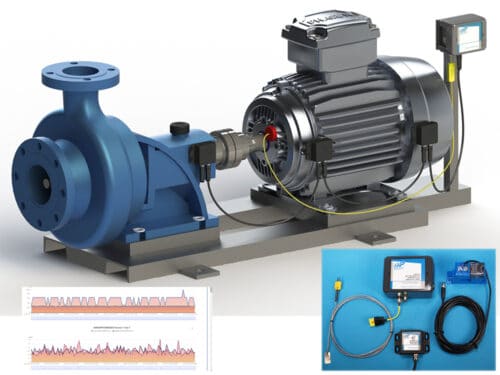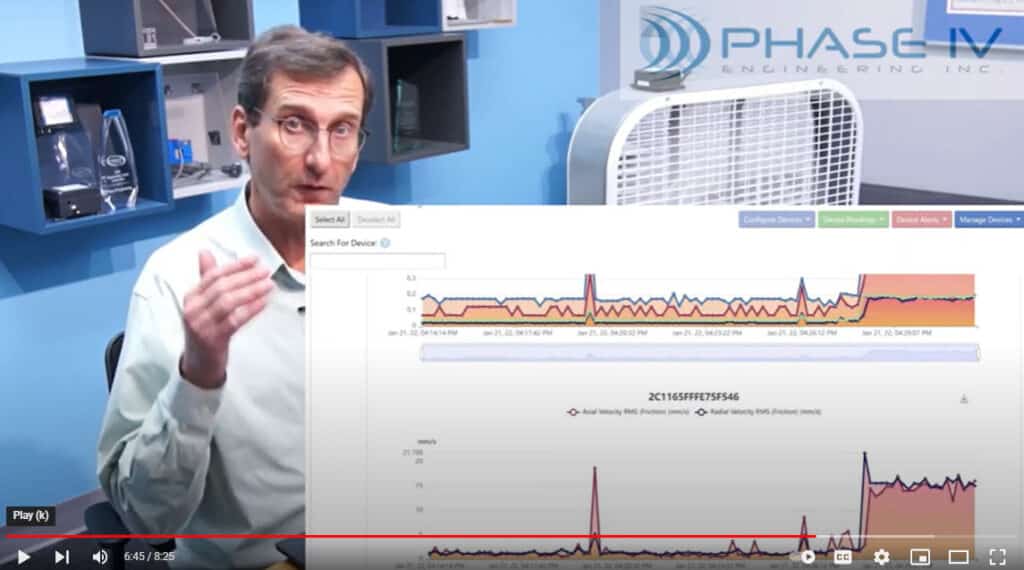-
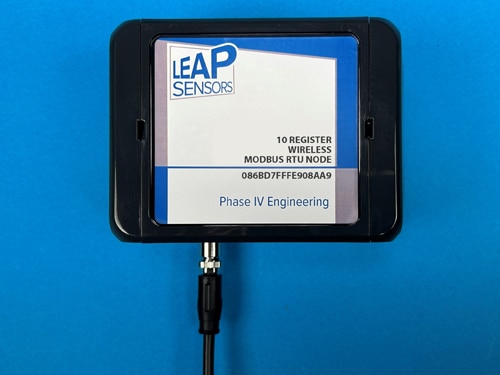 Wireless transceiver node with an RS485 Modbus RTU interface can read up to 10 Modbus registers to track valuable machine monitoring data. Can be used with almost any Modbus RTU sensor and communication device. Contact us to discuss best options for your application. Connect the transceiver node to a variable frequency drive (VFD) to collect data such as electric current draw, voltage levels, RPM, temperatures, and error conditions. Ideal for predictive maintenance or automated process auditing. Due to the high-power consumption of the Modbus RTU interface, this transceiver node typically uses a external power source to power the node. Battery power is an option if data sampling and transmitting is done every few hours. Part of the breakthrough Leap Sensors® system. Build your quote here:
Wireless transceiver node with an RS485 Modbus RTU interface can read up to 10 Modbus registers to track valuable machine monitoring data. Can be used with almost any Modbus RTU sensor and communication device. Contact us to discuss best options for your application. Connect the transceiver node to a variable frequency drive (VFD) to collect data such as electric current draw, voltage levels, RPM, temperatures, and error conditions. Ideal for predictive maintenance or automated process auditing. Due to the high-power consumption of the Modbus RTU interface, this transceiver node typically uses a external power source to power the node. Battery power is an option if data sampling and transmitting is done every few hours. Part of the breakthrough Leap Sensors® system. Build your quote here: -
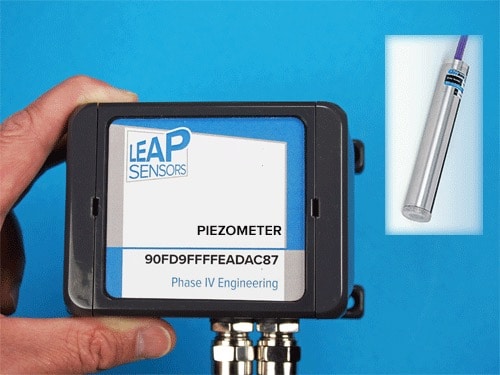 Sensor transceiver node designed to integrate with a wide range of piezometers that have a mV/V, 4-20 mA, or 0-5 V or 0-12V output. Wireless piezometers are typically used for monitoring fluid pressures or pore water pressure in embankments, boreholes, standpipes, reservoirs, and tanks. Maximum pressure ranges from 100 kPa to 6 MPa. Contact us to find the best piezometer configuration for your specific application. Part of the breakthrough Leap Sensors® system. Build your quote here:
Sensor transceiver node designed to integrate with a wide range of piezometers that have a mV/V, 4-20 mA, or 0-5 V or 0-12V output. Wireless piezometers are typically used for monitoring fluid pressures or pore water pressure in embankments, boreholes, standpipes, reservoirs, and tanks. Maximum pressure ranges from 100 kPa to 6 MPa. Contact us to find the best piezometer configuration for your specific application. Part of the breakthrough Leap Sensors® system. Build your quote here: -
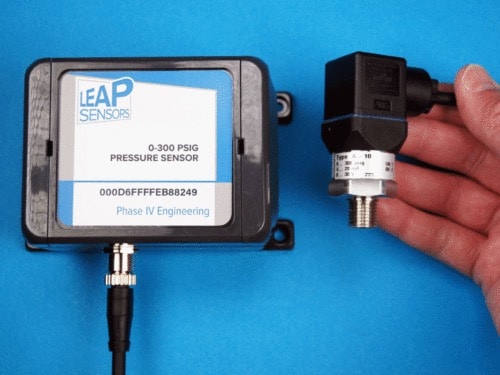 The Leap wireless pressure transceiver can integrate with every type of WIKA pressure transducer - 4-20mA, 0-10V, and I2C outputs.
The Leap wireless pressure transceiver can integrate with every type of WIKA pressure transducer - 4-20mA, 0-10V, and I2C outputs.Configured to Your Exact Application
The external industrial sensor may be powered by an optional 12 or 24V power supply driven from the over-sized Leap Sensor node battery. No external power source is needed with the 12/24V power supply option (LP-1PXX). See below for other options to configure this industrial wireless sensor node to your exact needs. Contact us to find the best combination or let us know which WIKA sensor you would like us to integrate. See the data sheet for detailed specifications. Part of the breakthrough Leap Sensors® system. Build your quote here: -
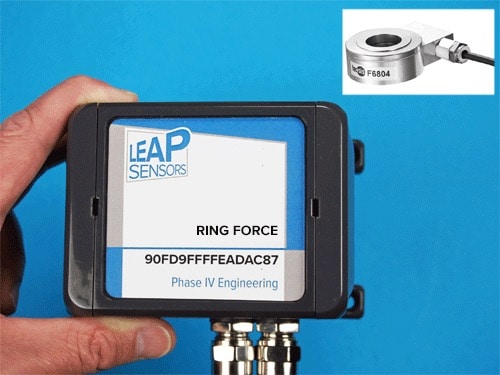 Wireless transceiver node designed to integrate with any ring force transducer that has one of these outputs: mV/V, 4-20 mA, or 0-10V. The Leap transceiver node provides power to the ring force transducer. Ideal for monitoring preloads, testing equipment, clamping forces, and remote ongoing force and load monitoring. Contact us to find the best ring force transducer configuration for your specific application. Part of the breakthrough Leap Sensors® system. Build your quote here:
Wireless transceiver node designed to integrate with any ring force transducer that has one of these outputs: mV/V, 4-20 mA, or 0-10V. The Leap transceiver node provides power to the ring force transducer. Ideal for monitoring preloads, testing equipment, clamping forces, and remote ongoing force and load monitoring. Contact us to find the best ring force transducer configuration for your specific application. Part of the breakthrough Leap Sensors® system. Build your quote here: -
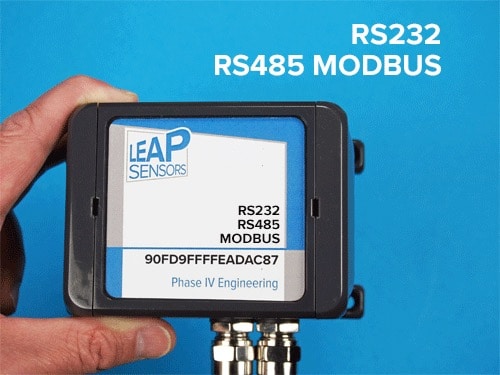 Integrate any sensor with an RS485, RS485 Modbus, or RS232 output into the Leap Sensors system to convert it to a wireless sensor. The sensor is powered by the battery in the Leap transceiver node with a power supply that can be specified from 3.6V to 24 volts. No external power source is needed. Contact us to let us help you make your selected RS485 or RS232 sensor wireless. Part of the breakthrough Leap Sensors® system. Build your quote here:
Integrate any sensor with an RS485, RS485 Modbus, or RS232 output into the Leap Sensors system to convert it to a wireless sensor. The sensor is powered by the battery in the Leap transceiver node with a power supply that can be specified from 3.6V to 24 volts. No external power source is needed. Contact us to let us help you make your selected RS485 or RS232 sensor wireless. Part of the breakthrough Leap Sensors® system. Build your quote here: -
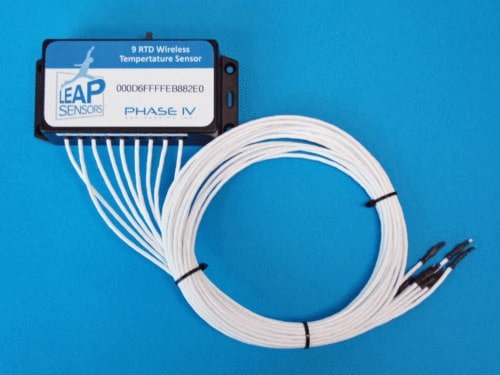 This highly versatile industrial sensor supports 6 to 9 miniature, low-mass precision RTD temperature sensors connected to a transceiver node in an industrial enclosure. Ideal for data center rack remote monitoring.
This highly versatile industrial sensor supports 6 to 9 miniature, low-mass precision RTD temperature sensors connected to a transceiver node in an industrial enclosure. Ideal for data center rack remote monitoring.- 3-wire RTD connection supports long cables while also maintaining high temperature accuracy.
- Readings as fast as every 3 seconds for each of the sensors.
- Data logging capability when the transceiver node is not linked to a gateway.
- Option to integrate existing rack monitoring probes for "plug & play" installation.
-
 The gateway continually runs off of the 5V from the battery module. When power is lost, the battery back up module supplies power to the gateway for approximately 2 days. The battery backup module plugs into a wall outlet to stay charged. Easy to install - plug the battery backup module into a wall outlet using a wall transformer. Connect the gateway to the battery backup module using the supplied cable. LEDs on the battery module show that battery charge level. Gateway is not included. Part of the breakthrough Leap Sensors® system. Build your quote here:
The gateway continually runs off of the 5V from the battery module. When power is lost, the battery back up module supplies power to the gateway for approximately 2 days. The battery backup module plugs into a wall outlet to stay charged. Easy to install - plug the battery backup module into a wall outlet using a wall transformer. Connect the gateway to the battery backup module using the supplied cable. LEDs on the battery module show that battery charge level. Gateway is not included. Part of the breakthrough Leap Sensors® system. Build your quote here: -
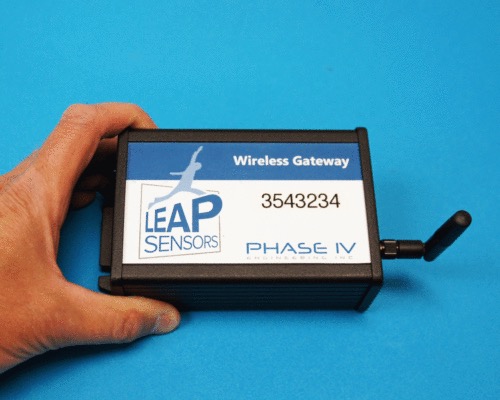 Wireless gateway receives the sensor data over the air from the Leap wireless transceiver nodes, then passes the data to the Leap software. This version connects to a local network via a cellular network. Easy to install - plug in the gateway, open a web browser, log in, and the Leap Sensors system is ready to manage. Part of the breakthrough Leap Sensors® system. Build your quote here:
Wireless gateway receives the sensor data over the air from the Leap wireless transceiver nodes, then passes the data to the Leap software. This version connects to a local network via a cellular network. Easy to install - plug in the gateway, open a web browser, log in, and the Leap Sensors system is ready to manage. Part of the breakthrough Leap Sensors® system. Build your quote here: -
 Wireless gateway receives the sensor data over the air from the Leap wireless transceiver nodes, then passes the data to the Leap software. This version connects to a local network via standard Ethernet cable and RJ-45 connector. When the software resides on the gateway, the software may also be directly accessed using the USB port on the gateway. Easy to install - plug in the gateway, open a web browser, log in, and the Leap Sensors system is ready to manage. Part of the breakthrough Leap Sensors® system. Build your quote here:
Wireless gateway receives the sensor data over the air from the Leap wireless transceiver nodes, then passes the data to the Leap software. This version connects to a local network via standard Ethernet cable and RJ-45 connector. When the software resides on the gateway, the software may also be directly accessed using the USB port on the gateway. Easy to install - plug in the gateway, open a web browser, log in, and the Leap Sensors system is ready to manage. Part of the breakthrough Leap Sensors® system. Build your quote here:

